#Skidmore College
Text

Z a z i e B e e t z
195 notes
·
View notes
Text



Skidmore Volleyball
#Skidmore College#Skidmore Thoroughbreds#volleyball girls#college volleyball#athlete#female athletes#college athlete#college girl#d3 athletes
87 notes
·
View notes
Text

From our picture files: "Like a bouquet of open umbrellas" new library roof is built with 550 laminated wood beams". Louis Jefferson Long Library / Wells College, Aurora, NY. Architect: Skidmore, Owings & Merrill, Chicago, Illinois. Progressive Architecture 7/69
#louis jefferson long library#wells college#library#libraries#architecture#library buildings#1969#1960s#vintage#vintage libraries#skidmore#skidmore owings and merrill
43 notes
·
View notes
Photo

0 notes
Text
SET NINE - ROUND ONE - MATCH SIX


"Siroče na majčinom grobu (Orphan on Mother's Grave)" (1888 - Uroš Predić (Урош Предић) / "You Make My World a Better Place to Find" (1996-1998 - Dario Robleto)
SIROČE NA MAJČINOM GROBU (ORPHAN ON MOTHER'S GRAVE): This painting by Uroš Predić fucks me up every time. It's called "Siroče" so in English it would be "Orphan" and you can tell. You can tell. The kid is freezing cold and sleeping on their parents grave it makes me want to curl up into a ball and sob. (@flemmboyant)
YOU MAKE MY WORLD A BETTER PLACE TO FIND: To me, this piece is all about showing people you love them. I have never been good at telling people how I feel, and so I have always tried my hardest to show it, and this spool of thread shows love more than anything I've ever seen. What is more essential than warmth? If nothing, then how can we show our love for someone more than by taking pieces of them and using them to fix our blankets and mittens? How can we say "I have used pieces of you to fix my clothes, and now carry you wherever I go" and not mean "I love you"? (@tofuapathy)
("Siroče na majčinom grobu (Orphan on Mother's Grave)" is a painting by Serbian artist Uroš Predić. It is held by the National Museum of Serbia.
"You Make My World a Better Place to Find" is a mixed media piece comprised of lint, thread, various debris and particles, and the artist's grandmother's antique wooden spool. The artist, Dario Robleto, spent two years collecting detritus from friends, acquaintances, and strangers without their knowing, turning the result into thread, and then repairing a number of objects with the thread. The spool is 1 1/4 x 1 x 1 in (3.2 x 2.5 x 2.5 cm), and is held by the Frances Young Tang Teaching Museum and Art Gallery at Skidmore College.)
257 notes
·
View notes
Text



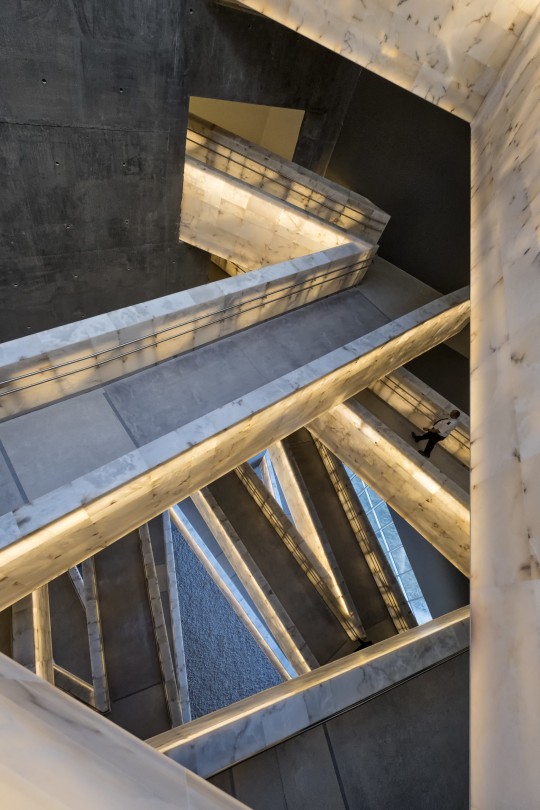
Antoine Samuel Predock, FAIA (June 24, 1936 – March 2, 2024)
Mr Predock was an American architect based in Albuquerque, New Mexico. He was the principal of Antoine Predock Architect PC, the studio he founded in 1967.
Mr Predock first gained national attention with the La Luz community in Albuquerque, New Mexico. The first national design competition he won was held by the Nelson Fine Arts Center at Arizona State University.
Mr Predock's work includes the Turtle Creek House, built in 1993 for bird enthusiasts along a prehistoric trail in Texas, the Tang Teaching Museum and Art Gallery at Skidmore College, and a new ballpark for the San Diego Padres, the Petco Park. He also worked on international sites such as the National Palace Museum Southern Branch in Southern Taiwan and the Canadian Museum for Human Rights in Winnipeg, Manitoba.
Canadian Museum for Human Rights, Winnipeg, Manitoba.
#art#design#stairwell#architecture#stairway#staircase#stairs#interiors#staircases#new mexico#canada#antoine predock#rip#rip antoine predock#winnipeg#manitoba#hunman rights#la luz#FAIA
98 notes
·
View notes
Text



It's freakin' Friday so here are some Skidmore Frolics for you! These selections from 1926 come from Skidmore College's George S. Bolster Photograph Collection in JSTOR, free and open to all!
153 notes
·
View notes
Text
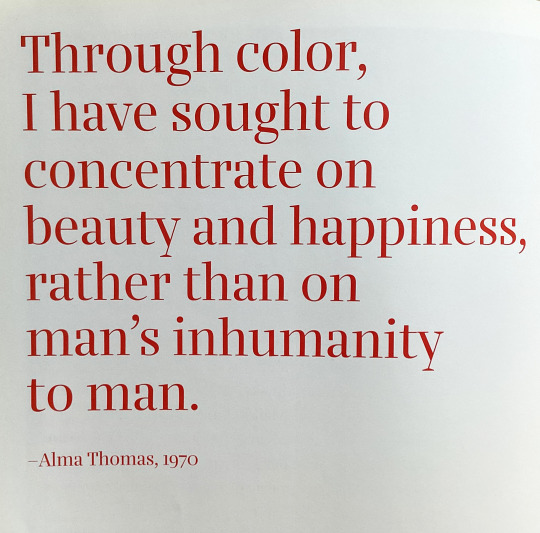

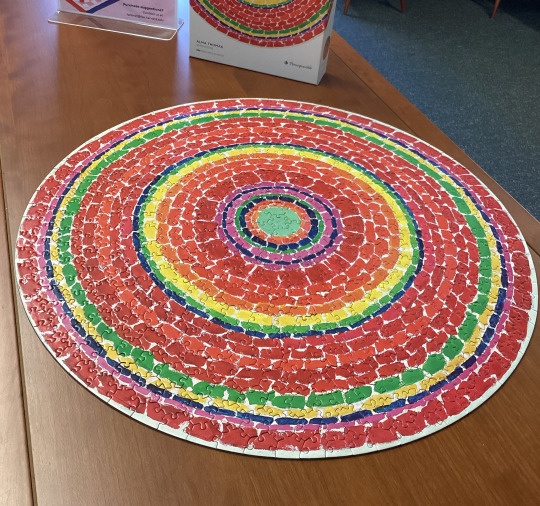
Now recognized as a major American painter of the 20th century, Alma Thomas (1891-1978) is best known for her colorful abstract paintings. Thomas believed in creating beautiful work. She said:
“I’ve never bothered painting the ugly things in life. People struggling, having difficulty. You meet that when you go out, and then you have to come back and see the same thing hanging on the wall. No. I wanted something beautiful that you could sit down and look at. And then, the paintings change you.” –– Alma Thomas, ca. 1977–78
Besides many books on the artist, the Fine Arts Library also has an Alma Thomas puzzle! When you get tired of studying, or just feeling tired of seeing too many ugly things in the world, come to the library, and let your mind go by looking at this colorful puzzle. You can also borrow it and take it home with you!
Image 1: “Through color, I have sought to concentrate on beauty and happiness, rather than on man’s inhumanity to man.” –– Alma Thomas, 1970
Image 2: Color photograph of Alma Thomas in the studio
Image 3: Completed Alma Thomas puzzle at the Fine Arts Library
Alma Thomas
New York, New York : The Studio Museum in Harlem ; Saratoga Springs, New York : The Frances Young Tang Teaching Museum and Art Gallery at Skidmore College ; Munich : DelMonico Books/Prestel, 2016.
HOLLIS number: 990148627750203941
Alma Thomas in Her Studio
Color photography
Columbus Museum, Columbus (Muscogee, Georgia, United States) (inhabited place)
HOLLIS number: 8001685875
The second image is part of FAL’s Digital Images and Slides Collection (DISC), a collection of images digitized from secondary sources for use in teaching and learning. FAL does not own the original artworks represented in this collection, but you can find more information at HOLLIS Images.
#AlmaThomas#Photography#Painting#AbstractPainting#Beauty#Puzzle#ArtPuzzle#Portrait#Blackartist#Blackwomenartist#Blackhistorymonth#HarvardFineArtsLibrary#Fineartslibrary#Harvard#HarvardLibrary#Digitalimage
47 notes
·
View notes
Text

Dickey Betts & Berry Oakley, Skidmore College, Saratoga Springs, New York, May 15, 1971.
52 notes
·
View notes
Text

Ruby Sky Stiler—New Patterns, The Frances Young Tang Teaching Museum and Art Gallery, Skidmore College, Saratoga Springs, NY, 2023 [Art: © Ruby Sky Stiler]



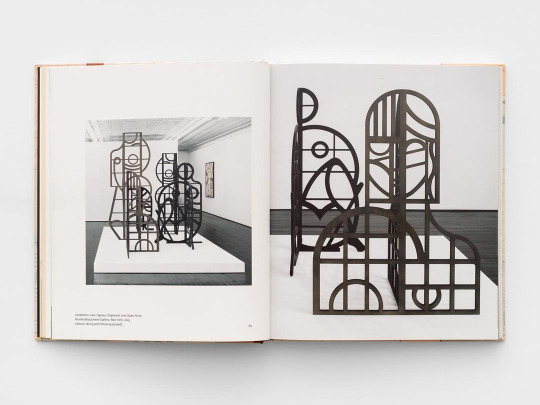


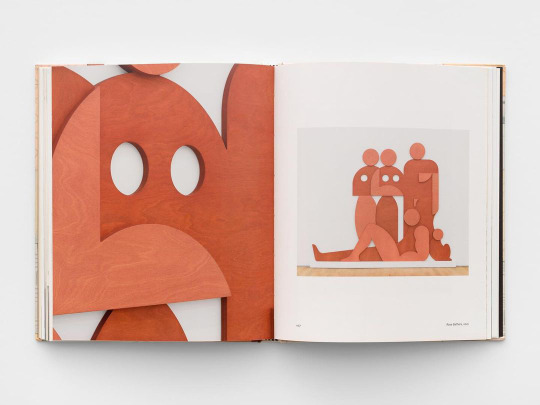

Contributors: Ian Berry, Jennifer Higgie, Mellissa Huber
Design: Beverly Joel / pulp, ink.
Exhibition: Curated by Dayton Director Ian Berry in collaboration with the artist, Tang Teaching Museum, Saratoga Springs, NY, January 29 – May 15, 2022 [The exhibition was on view at the Fairfield University Art Museum, Fairfield, CT, from September 11, 2020 to December 19, 2020]
#graphic design#art#pattern#geometry#exhibition#catalogue#catalog#cover#ruby sky stiler#ian berry#jennifer higgie#mellissa huber#beverly joel#tang teaching museum#the frances young tang teaching museum and art gallery#fairfield university art museum#2020s
15 notes
·
View notes
Text
#Top four here- choose wisely I guess? It doesn’t really mean anything though#I just wanna see the consensus yk#If you’ve got strong opinions drop em into the tags or comments#And feel free to reblog- I think having more people take it will make the answers more interesting
7 notes
·
View notes
Text

The Allman Brothers Band performing at Skidmore College, 1971. Photo by Harry Sandler
22 notes
·
View notes
Text
Join Me in Supporting the American Foundation for Suicide Prevention.
I am joining thousands of students, parents, teachers, administrators and communities across the country who are walking in the Out of the Darkness Campus Walks to prevent suicide and support AFSP's mission to save lives and bring hope to those affected by suicide.
Please help me reach my goal by clicking the "Donate" button on this page. All donations are 100% tax deductible and benefit the American Foundation for Suicide Prevention (AFSP), funding research, education, advocacy, and support for those affected by suicide.
If you would like to donate by check, please download the offline donation form HERE and mail it with the check.
Thank you for your support (of me and this cause!)!
3 notes
·
View notes
Photo

Professor Joseph Palamountain, Skidmore College, 1974.
26 notes
·
View notes
Text
Easter Egg Window
Twenty or twenty-five years ago—it’s hard to imagine how the time has flown—I had the opportunity to hide a sort of Easter egg in the main building of California College of the Arts in San Francisco. It’s not a masterwork of architecture, but it does show how one architect thought about a particular problem, so it may be illuminating. (For the non-architect, the most illuminating thing may be how much thinking can go into a very small decision.)
The building was originally built as Greyhound bus lines’ northern California repair shop. There was a great big enclosed space, the size of a football field, in which they fixed the buses, and along the long side of it were two stories of machine shops. As Lorne Buchman, president of CCA when the building was purchased, liked to say, it was the perfect building for a college of art and design. The big, open volume got subdivided into studio spaces, as did the upper, sky-lit floor of the two-story part, and the lower floor of that part became offices and classrooms.
It is a handsome building, thought to be Skidmore Owings & Merrill’s first in San Francisco. The drawings were signed by SOM partner Walter Netsch. The two-story part has continuous bands of steel-framed windows, which extend out from the wall a few inches, adding a layer to it. They look like this:

You’ll notice in the center of this image two window panels with thicker frames. These are the operable panels. They are what are known as “hoppers”: they’re hinged at the bottom and tilt inward to open. The architectural drawing convention for this kind of window looks like this; the point of the “V” is the hinge side:

In a renovation of one of the offices on this floor, a larger room was divided into two smaller ones, one of which—the one next to the entrance—ended up without an operable window:

David Meckel, who at that time was officially Dean of Architectural Studies and effectively Campus Architect, asked me to figure out how to modify that window so that it could open.
The most obvious solution would be to make one of the two lower panels operable, for example like this:

That, however, seemed a little boring, and it would have been the only instance where the operable window wasn’t part of a pair. Here’s what I ended up suggesting, instead:

How did I think about it?
First, I thought it should operate the way the other windows do, so it, too, is a hopper:

At the same time, I had observed that the operable panels of the original windows, taken together, are the same proportion as the pair of larger frames in which they sit, just shrunk:

. . . so I thought that could be echoed in the new window, as well:

That was the logical part.
In the process, though, a couple of amusing things occurred to me. The first is that another way to think about the operable frame in the new window is as if one of the existing frames had been slid over by half:

And, what’s really fun, when you open the window, you discover that the center vertical bar in the operable part (in the trade it’s called a muntin) is independent of the bar above. You don’t expect the two to break apart, but of course they do:
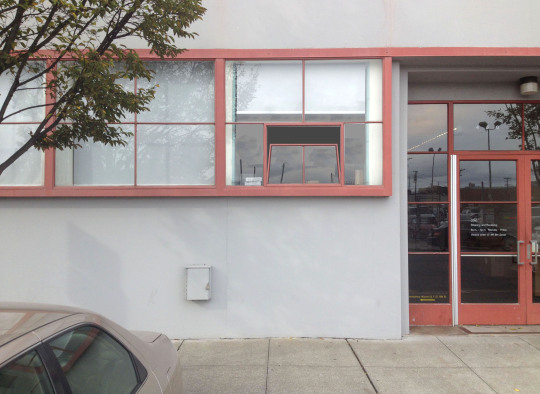
Significant? Not especially, but I like to think it’s an appropriate transformation for this building, because it heightens, just a little bit, the sense of layering that characterizes the original. That’s because, whenever you can think about a pattern in more than one way at a time, or can imagine a part of a pattern shifting or changing size, or when something that you think is part of one thing is actually (or also) part of another, each of those possibilities suggests a new layer.
And, whether or not anyone has noticed it in all these years, it remains available as a tiny lesson-prompt for the architecture students who walk by it every day.

10 notes
·
View notes
Text
Welcome to Wonderful World of Darklords' Dog Days of Summer! Tom and Rachel have just finished driving thirty hours in the span of two weeks and their summer travel isn't done yet, so in lieu of regular episodes, we're going to be airing bonus episodes in July and August. Luckily, that gives us the chance to premier the long-awaited Book Club of Dread!
If you thought that Hocus Pocus 2 we got was too derivative of the original, you ain't seen nothing yet. According to industry gossip, Disney wanted to make a 25th anniversary sequel in 2018. When it fell through, they commissioned A.W. Jantha to turn that script into a novel, and the result was…not good. We're going to provide you an exhaustive synopsis of this ridiculous novel, then spend some time snuffling out the delicious gaming truffles hidden in this manure. Topics discussed include:
--The original character who was meant to be the Dani analog, and an analysis of why Dani is endearing while this chucklehead needs to be shot to the moon in a cannon;
--The character from Hocus Pocus who got a complete personality transplant somewhere in the intervening 25 years, turning what could have been an interesting unresolved emotional beat into a Harry Potter knockoff;
--The genre for which A.W. Jantha has a genuine gift (sadly, it's not screwball horror comedy);
--So, so many plot points that occur just like they do in that movie, Hocus Pocus, but with none of the charm;
--And more!
As a reminder, this episode is PG-13 rather than PG. We're bleeping out the f-bombs, but there are a LOT of bleeped f-bombs, and the humor gets a bit saltier.
If you want to drink along with us, the recipe for Hocus Pocus Punch is here: https://crayonsandcravings.com/hocus-pocus-punch/ We turned it into a cocktail, but the recipe is for a mocktail, and it would be delicious either way.
All music recordings are in the public domain (mark 1.0) and are licensed through https://musopen.org:
Night on Bald Mountain by Modest Mussorgsky, performed by the Skidmore College Orchestra
The Wonderful World of Darklords logo was designed by Halite Jones, whom you can find @halite-draw or on Instagram: http://www.instagram.com/insta_halite
Contact us on:
Gmail: [email protected]
Facebook: @wonderfulworldofdarklords
Patreon: https://www.patreon.com/TheWonderfulWorldofDarklords651
3 notes
·
View notes